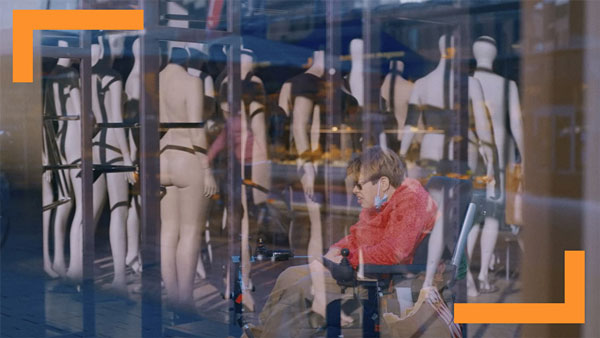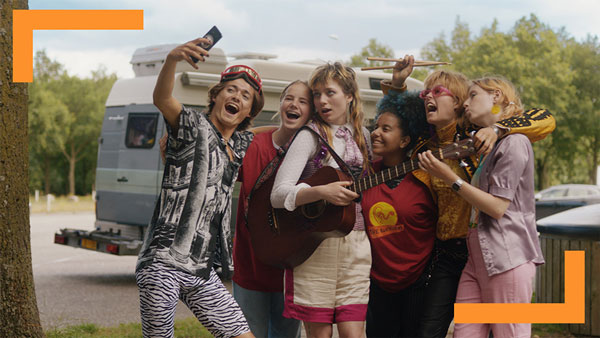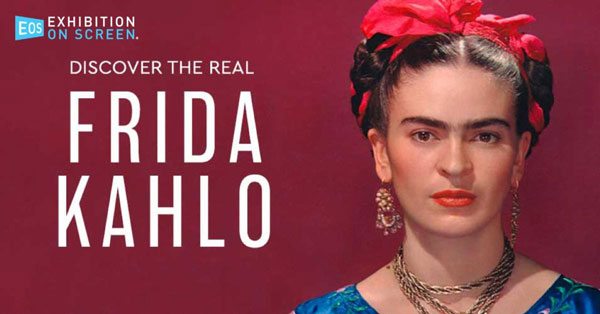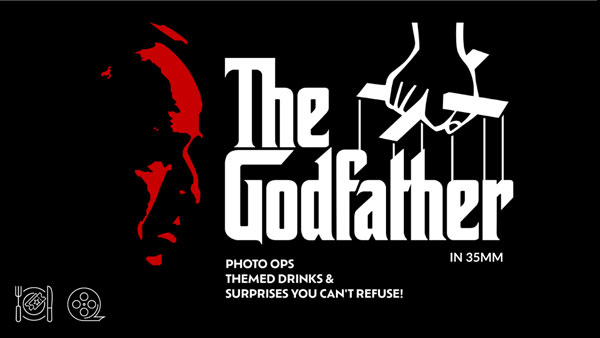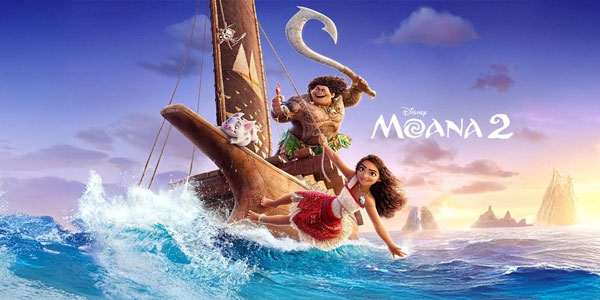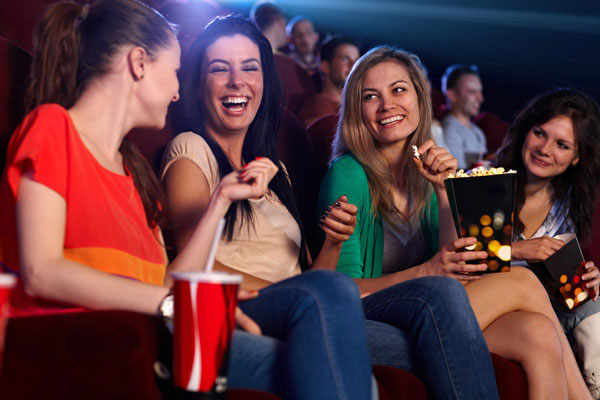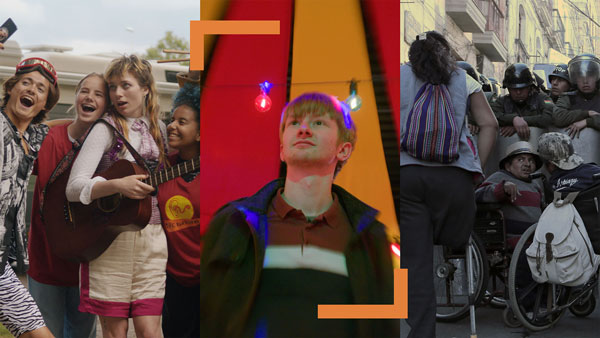?>
Festival Proves Super 8 Film Is Not Dead Yet!
By Al Nigrin
originally published: 05/30/2017
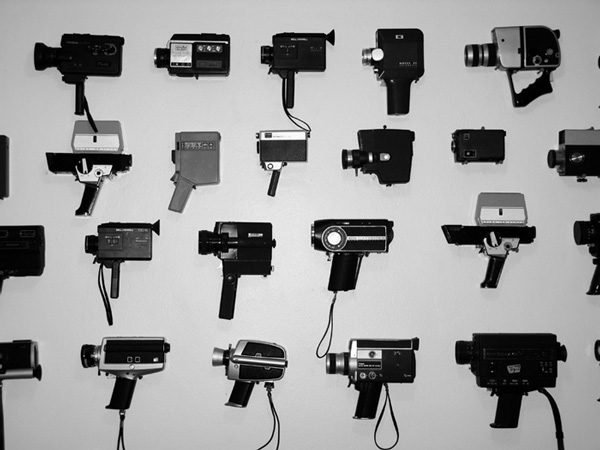
Festival Proves Super 8 Film Is Not Dead Yet!
Super 8mm film was introduced in 1965 by Eastman Kodak at the World’s Fair in New York to help the average person document their everyday lives. Super 8mm was most widely used for filming home movies between the mid 1960s till the early 1990s. Today amateur usage of Super 8mm has been replaced by digital video but the format is still regularly used by filmmakers, artists and students. Some hope to imitate the look of old home movies. Others want to create alternative looks for flashback sequences and altered states of consciousness. Some just like the idea of creating images in the classic style of using actual film. Super 8mm is a relatively inexpensive film, making it popular among filmmakers working on a low budget who still want to achieve the look of real film. Super 8mm has become quite common in theatrical features. J.J. Abrams 2011 film Super 8 pays homage to the little film format. Guy Maddin’s surreal 2006 film Brand Upon The Brain and Jim Jarmusch’s 1997 film Year of the Horse -- a documentary on Neil Young’s band Crazy Horse -- use it too.
I fell in love with Super 8mm when I started making films in 1982. I liked the fact that you were pretty much in control of every aspect of the filmmaking process. I could even develop the film myself. So it was the DIY aspect of Super 8mm that first lured me in but it was the grainy, oneiric (dreamlike) quality of the film stocks that sold me on this format. I have since made over 30 short (mostly experimental) films using Super 8mm. I started touring my work and showing it all over and then met two of the biggest Super 8mm film supporters in the USA. They are the husband and wife team of Bob Brodsky and Toni Treadway. They founded and ran the International Center for 8mm Film and Video in Massachusetts for over 30 years. Through their non-profit organization they subsidized many Super 8 filmmaker by sending them to film festivals in the USA, England, France, Venezuela, Brazil, Canada, and others. It was thanks to them that I got to visit so many wonderful festivals and countries. The largest United States-based Super 8mm Film Festival in the 1970s and 1980s was the one in Ann Arbor, Michigan. Bob and Toni sent me there to show a package of experimental films that I had curated in 1986 but by 1988 the people who ran this legendary festival decided they were going to cease operations. So Bob and Toni suggested that I create one at Rutgers since I had set up the Rutgers Film Co-op/New Jersey Film Festival back in 1982. So I did and called it the United States Super 8mm Film Festival. The first of these was a curated program where I invited Super 8 filmmakers that I admired to screen their work but the 28 that followed were juried festivals where a panel of judges and the audience picked the winners. The Festival has changed over the last 3 decades going from screening Super 8mm films exclusively to then including Hi 8mm videos and now digital videos. So I thought it would be nice to ask some of the filmmakers who are finalists in the 2017 United States Super 8mm Film and DV Festival to talk about Super 8mm film and the films they are showing at this year's program. The filmmakers that I spoke to are Giles Perkins, Director of Eat Some Food, Ride Your Bike and N.L. Brooks, Director of Angel who both live in England, Jason Sklaver, Director of War, One Afternoon who lives in Los Angeles, Sam Zorilla, Director of Sunflowers who lives in Argentina, and David Ellis, Director of Long Departure who lives in Massachusetts.

Still from Eat Some Food, Ride Your Bike by Giles Perkins
Nigrin: Tell us about your film that is a finalist in the United States Super 8mm Film & Digital Video Festival and why you decided to make it.
Perkins: Eat Some Food, Ride Your Bike, is about a friend and neighbor Greg, an endurance cyclist who covers huge distances. I made this film exploring why he rides and it was made in the run up to him competing in the Tour Divide, a 2700 mile, off-road race from Banff in Canada, down the spine of America to the Mexico border. I make short documentaries and ride bikes myself, the timing was perfect.
Brooks: In my film Angel, the titular character hates his job at Grim Reapings Inc. During his lunch break he finds light at the end of the tunnel in the form of a bubble-blowing kid…I’m over the moon and very honored that my film is a finalist in and will have its world premiere at the prestigious United States Super 8mm Film & Digital Video Festival alongside films from esteemed filmmakers with impressive resumes. I really like the themes of beginnings and endings and so I naturally turned to the figure of the grim reaper as a mediator between the two. I think my film is cute and whimsical and hopefully strikes a chord and inspires those who watch it in some way. I’m really happy with it. I think it was one of those instances where everything came together just the way it was meant to. The cast all embodied their roles magnificently, I think.
Sklaver: War, One Afternoon is a ten minute, silent, B&W film with an original jazz score as its singular voice. The film takes place in the United States during the Vietnam War. It is an internal, artisanal film that relies on a cinematic aesthetic to tell a complex story about perception and the human psyche. With the Silent Film Era long since passed and visual storytelling rapidly becoming a lost art form, War, One Afternoon is both my homage to a bygone era and my answer to a modern treatment of the silent film genre.
Zorilla: Sunflowers is the result of various years of experimenting with multiple exposures in Super 8. Once I learned the trick of opening up the Super 8 cartridge and rewinding the film by hand I have spent endless nights thinking of ways of using the multiple exposure in new and interesting ways. I finally ended with the shape of the circle in order to break up the standard square frame of the film screen and experiment on using the shape of the human eye to plan an compose my shots. My first roll using this technique was done with 5 exposures but there was so much information on screen that it became rather impossible to comprehend what was going on and I switched to a tryptic which allows for more focused juxtapositions between the different layers.
Ellis: Long Departure is a short experimental film but, more than that, it is really a visual poem addressing passage, time, aging and the blur between departure and destination. It captures a brief moment from life’s continuum, revealing the temporal fragility of life along with a spirit of determination. In this non-traditional storytelling portrayal, the interplay of image, sound and atmosphere leaves the viewer to create their own narrative, in a cinema created as pure visual poetry without the burden of narrative, agenda or the limitation of language, intended to be responded to as pure art of moving image and sound. Shot on b&w Super 8 film in Paris, with HD video montage, the haunting minimal music of Hanoi’s Nhung Nguyen (soundawakener.com) was composed specially for Long Departure and adds a beautiful audio layer to this experimental film. I made this film, as I have made others, as an exploration of new alternatives to filmmaking as traditional “storytelling”. I am interested in creating cinema as pure art…as a form of poetry. I am not interested in creating films with the usual ”formula” found in the narrative form of film making, i.e…the setup of characters, situation and resolution. That is not how I view and experience life.

Still from Angel by N.L. Brooks
Nigrin: Why did you shoot your latest project in Super 8mm film?
Perkins: I shoot most of my films on Super 8, I prefer the medium. For me a short shot on celluloid feels more like a memory rather than merely being the experience of watching something pass by.
Brooks: I’d already directed a short documentary on digital so I wanted something a bit different for my first narrative short. As a kid we had a cinema room where we’d watch films and also project old 8mm and 16mm home videos our family had taken from the 1950s onwards. I found the footage of my great-grandparents, grandparents and my folks amazing and magical - everything from the flickering of the images to the clicking of the projector and the reel spooling.
Sklaver: The story takes place in 1967, shortly after the birth of the Super 8 format. If you believe in the idea that content dictates style, it naturally makes sense from a narrative, aesthetic, and technical standpoint to shoot on Super 8.
Zorilla: I filmed this roll as a way to divide up time and space of modern life in the city of Buenos Aires. By seeing the city through a new frame and seeing three separate cross-sections of time all at once, the city finds new life.
Ellis: I have a long history experimenting with analog film and alternative image capture. I love the visual feel of film, with all it’s flickers, light leaks, glitches and quirks that are part of film’s personality. Most all of my camera work is handheld, and either is a stationary view or a moving shot following a subject when I am shooting in the field. I like how the movement in the film records my participation in the moment, as well as a recording of the subject. I also like the fact that each Super 8 film cartridge will only run either just over 3 minutes at 18fps or 2 min 26 sec at 24 fps and that is all the time there is with a particular camera to capture a subject/scene….that is all you get…so it requires intense focus on the moment. I also enjoy allowing “chance” to be an element in the creation of a film, and the acceptance of its imperfections. I like hearing the whirring motor of the camera as the film rolls and it’s relative simplicity, that it is mechanical and that the film uses chemistry.
.jpg)
Still from Sunflowers by Jeff Zorilla
Nigrin: Do you find getting Super 8mm materials and film more difficult these days?
Perkins: No, it's easy to get film stock, even here in the U.K., I can still get it processed and when I convert to digital for the edit I'm getting higher quality than ever before.
Brooks: Where there’s a will there’s always a way so it seemed a relatively easy process for me. I’m hoping it will have much more of a revival though because it’s a truly gorgeous way of making films – it lends an extra layer of depth and feeling on top of the narrative.
Sklaver: No, Pro8mm in Burbank, CA, has a wide variety of products and services. Kodak has also launched an analog renaissance, committed to the reintroduction of the medium.
Zorilla: It has always been difficult but these last couple of years has been really tough. I hadn't even really thought about it until Kodak recently announced that they were bringing back Ektachrome, which caused me to think back to 3 years ago when absolutely everything I shot was on color reversal film. The end of Sunflowers is filmed in color reversal but it is from a roll I had hid away and I had to hand-develop it, hence the strange colors. But as they say, "Necessity is the mother of invention." in the end I like how the colors turned out weird, but I am eagerly waiting to return to filming in color reversal.
Ellis: No, not at all. I have been purchasing vintage Super-8 cameras for some years now on Ebay and have a variety of cameras with different features, lenses and speeds. They are still readily available and quite affordable. There are also many Regular 8mm and Super-8 projectors on Ebay as well. There are quite a few resources for the purchase of Super-8 film, such as Kodak B&W Tri-X or Kodak Vision 3 color negative film available in various ISO’s. I usually purchase my Super 8 film from B&H Photo & Video in NYC on-line. But there is also Adorama and Pro8 which offers purchase and processing package deals. I have my b&w processing and digital transfers done at CineLab in New Bedford, MA.

Still from War, One Afternoon by Jason Sklaver
Nigrin: Will you continue shooting in Super 8mm in the future?
Perkins: Yes. Always.
Brooks: Definitely. I love the fact that because you have a finite amount of film, you have to really focus on exactly what you want. For my film I methodically and mathematically mapped out the shooting script and then it was a case of doing it all in one take, chronologically. Often, I think the first take is the best anyway because it’s the freshest and most natural – on other projects I’ve worked on it was always the first or second take that was used in the final edit. And doing things chronologically, though a rarity in filmmaking, I think assists the actors with their character arc.
Sklaver: Yes, I am currently at work on another Super 8 short.
Zorilla: Most definitely, but I am also working more and more in 16mm
Ellis: I LOVE film and I am currently shooting in Super 8 and plan to continue using it. There is a growing interest in Super 8 as well as 16mm film and many groups and centers dedicated to analog film have sprung up around the world.

Still from Long Departure by David Ellis
2017 United States Super 8 Film & Digital Video Festival
View the winning films and digital videos of the International U.S. Super 8 Film + Digital Video Festival, selected by a jury of filmmakers, Rutgers University students, and media professionals. The festival--now in its 29th year—will feature finalist works by independent filmmakers from the United States and around the world. Prize winners will be announced after the screening, in a competition for prizes, along with the Audience Favorite Prize. Approx. 90 min Go to www.njfilmfest.com to see the complete festival line-up.
Friday + Saturday, February 18+19, 2017 at 7:00 p.m.
Voorhees Hall #105/Rutgers University
71 Hamilton Street, New Brunswick, New Jersey
$12=General; $10=Students+Seniors; $9=Rutgers Film Co-op Friends
Information: (848) 932-8482; www.njfilmfest.com
Jimmy John’s of New Brunswick will be providing free food prior to all New Jersey Film Festival Screenings!
Al Nigrin is a Cinema Studies Lecturer at Rutgers University. In addition, he is the Executive Director/Curator of the Rutgers Film Co-op/New Jersey Media Arts Center, Inc., which presents the Bi-Annual New Jersey Film Festival and the United States Super 8mm Film + Digital Video Festival.
Albert Gabriel Nigrin is an award-winning experimental media artist whose work has been screened throughout the world. He is also a Cinema Studies Lecturer at Rutgers University, and the Executive Director/Curator of the Rutgers Film Co-op/New Jersey Media Arts Center, Inc.
FEATURED EVENTS
To narrow results by date range, categories,
or region of New Jersey
click here for our advanced search.
EVENT PREVIEWS





.jpg)


